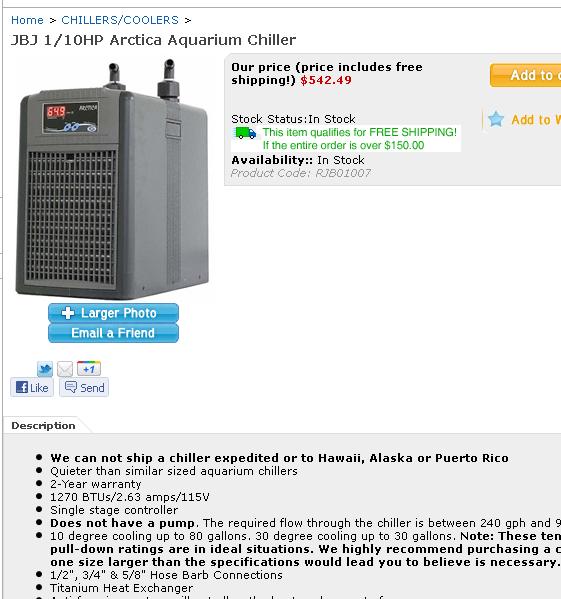One thing I learned in law school is that theory has a sneaky way of not working out in reality.... I think you are making the "assumptions" based on calculations from god knows where.... Or even if sound calculations--they are sound only in the textbook--away from other mitigating factors.
Seems you admit the internal chilling is more efficient--you just seem to think the fermenter needs to be insulated.
I think you are vastly overstating the need for the fermenter to be insulated (especially from room temperature air that is only a few degrees warmer).
Law school is not the ideal place to learn about physics. Theories in physics are very rarely proven false or to 'not work in reality. Especially those founded since the last century, and especially based on observations made while chilling beer in a garage in Florida. Perhaps in law school, or later, you studied the latest trial of "intelligent design" vs. evolution. Scientific theory is pretty well defined in it, as well as what laymen consider theory.
The biggest difference, though, is that I am basing my hypothesis on 'laws' of thermodynamics which even exceed the test for 'scientific theory'. The first law is a good read if you are interested.
I did not explicitly state that none of the suggestions were merely for the sake of saving a few bucks of elec. The were for system performance (better beer), regardless of energy cost. Most just happen to go hand in hand with energy savings because of those pesky thermo laws. Ease of use, on the other hand, is matter of personal choice, which I referred to in my post. That can involve trade-offs, but it doesn't change what the optimal choice is regardless of personal preference.
Here is the executive summary, talking points, bullets, or whatever the superficial treatment term of choice is:
Conservation of energy
Temperature Stratification
Heat transfer rate vs. efficiency
capacity vs. efficiency vs. reserve power
I can lay out all of the factors at play, but it would an even drier read than this already is. Some basics are: (some assume ambient temps are warmer than ferm temp)
The aq chiller can have a higher COP (chill/power) at normal temps because the temp of the evaporator is higher.
The aq chiller can be more energy efficient if its motor, etc. is smaller than a freezer's and closer the steady state chilling needs of the vessel. This is a negative if reserve power is needed for ramping/crashing.
The 'coil in liquid' can have a higher transfer rate, but is no more efficient in terms of energy usage in and of itself. Where it can increase energy eff is that it can chill faster than a freezer can, so the freezer is running and losing more heat (cold) to ambient for a longer time while waiting for the much colder air to more slowly transfer enough heat (cold) into the fermenter.
A freezer is insulated to prevent loss of heat (cold) to ambient. Keeping your uninsulated fermenter in the open air, it is constantly losing heat (cold) to ambient at rate related to the temp diff, but always higher than the vessel in a freezer. Your assumption that the SS metal provides insulation is true, but if you apply your same insulation value to that as you do your SS metal coil, it wouldn't work very well. In reality, the metal shell provides virtually no insulation. The main insulation is the ambient air and boundary layer of air (and beer) close to the vessel wall. Even if your chiller can keep up with the rate of heat loss, there are downsides other than higher energy usage.
One downside to not insulating, or not using a freezer, is radial temperature stratification. That is a fancy way of saying that your beer will be different temps at the vessel wall, and near the coil. The diff depends on many things, but especially ambient temps. Coil and probe placement can mitigate this, but it is not a simple issue especially if ambient temps vary. The fact that your fermenter doesn't sweat may be a sign of this, especially if the dewpoint has been lower than ferm temp lately. Trying to do a lager, or crash cool, doesn't improve the stratification or heat (cold) loss situation, and also reduces your crash rate.
Having said all that, the differences are not that great, except for the temp statification, lagering, and crashing in open air scenarios. If a chest freezer can't keep up with a 30gal ferm, a much smaller, or even similar sized, aq chiller won't be able to either, especially if the 30 gal under aq chilling is uninsulated in the open air. In practice, a freezer using air to transfer heat into a glass or plastic carboy, or metal conical, has no problems keeping up with a ferm even if it is chock full.
Typical "on times" are < 10 min/hour. A crapload of active ale will obviously have higher on times, but a lager should be little different than keeping food at temp. Considering that a chest freezer has no issue keeping food at ~0F in a hot garage with ease, the fact that your lager experience required it running 24/7 does not match up with normal operation.
One thing for you to look into is Anti-Short cycle Delay (ASD). Most Ranco's don't have it; you want this. There are other measures to help prevent short cycling. You can kill your compressor in short order without it. In general, it only comes into play for exceptional circumstances.































